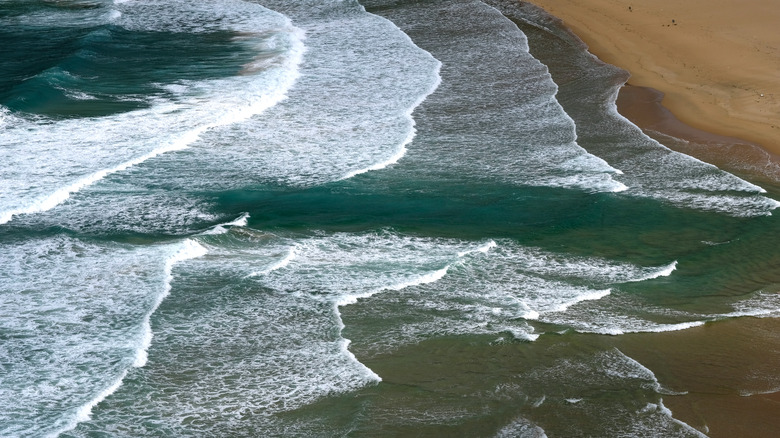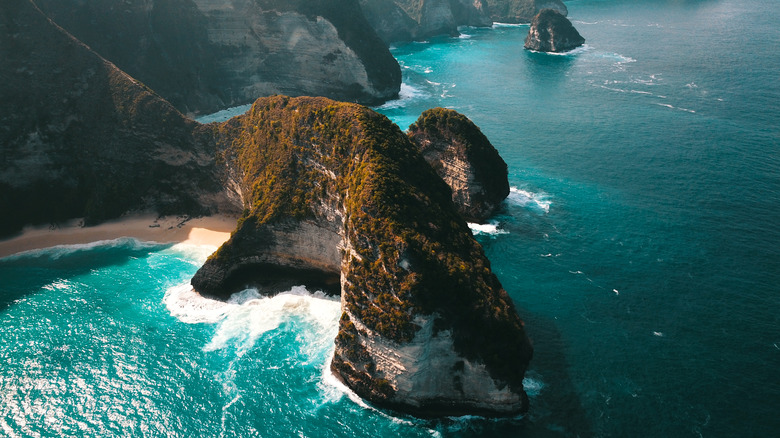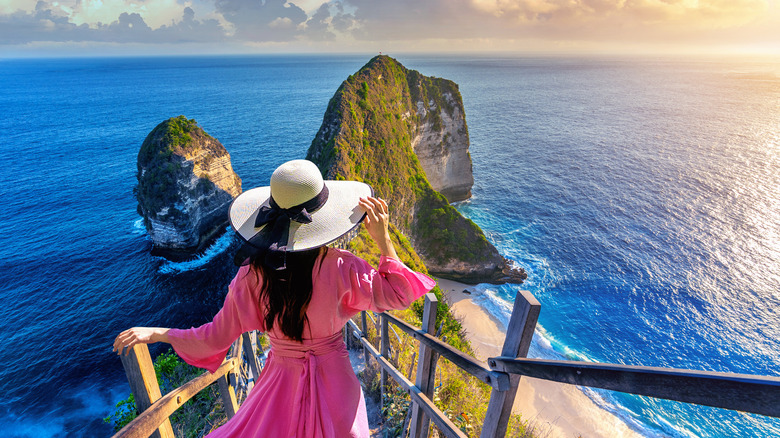As far as alluring vacation destinations go, the Indonesian island of Bali is hard to top. Renowned for its otherworldly blue waters, lush tropical terrain, and dazzling temples, this is a place that undoubtedly has a lot to offer in the way of memorable views. Visitors come with cameras in hand to enjoy adventures in nature that frame fantastic scenery. While a great landscape or selfie is just about guaranteed here, the beauty of these widely circulated photos isn’t always balanced out with indicators of potential dangers involved. One such place that’s seen its share of tragedy in Bali as a result is Kelingking Beach.
Situated on Nusa Penida, Kelingking Beach is a place where visitors often place themselves in frame among stunning rock formations, pristine white sand beaches, and deep blue waves that appear deceptively calm. Unfortunately, the breathtaking photos don’t portray the scary reasons tourists should never swim here. Recently, this beloved beach has become a place where severe injuries and even deaths have occurred, as droves of tourists arrive without understanding the inherent risks the landscape hosts. According to an article in The Bali Sun, swimming was banned here as of January 2023 to protect those unknowingly swimming into dangerous rip currents and tides. Even the nearby hiking path poses severe risks to those who attempt to travel it. While the beach still inevitably beckons travelers to come and explore, this is a place to remain firmly out of the water from now on.
Overlooked currents lurking beneath the waves

Spending time in Bali (or Bali’s dazzling destination dupe) is an opportunity to bask in the sun on picture-perfect beaches. Many visitors cool off in the idyllic surrounding water without ever taking time to consider the potential threat of unseen currents and riptides. While this is a danger overlooked at many beaches across the globe, at Kelingking Beach, it can come with particularly harmful and deadly consequences.
Kelingking Beach is nestled between towering clifftops that in combination, create a breathtaking scene. However, the landscape here is also incredibly dangerous due to unexpectedly strong currents paired with the potential for high waves. The undercurrents that flow beneath the sparkling blue surface rapidly pull sand out from beneath swimmers and in just a matter of seconds, can drag a person out into open waters.
Search and rescue teams in Nusa Penida aren’t strangers to visitors falling victim to strong currents and riptides, with emergency calls coming in regularly. Recent events have included a 27-year-old French tourist being swept out to sea at Kelingking Beach in January of 2023. While he was successfully rescued, the event left him with a severely broken hip. A Russian woman visiting Kelingking Beach that same month was hit with a strong wave and dislocated her shoulder. In June of 2023, two tourists devastatingly lost their lives taking selfies in the water when they were also swept out to sea, unable to be rescued.
Powerful waves pose more threats

Even if visitors are well-versed in knowing how to spot rip currents and handle them if they get caught up, Kelingking Beach is also a place where swimmers regularly encounter powerful and potentially destructive waves. News.com.au showcased an incident at the beach that occurred in July of 2023 when a British teenager was hit by a powerful and unexpected wave. The sheer impact of the wave caused the boy’s leg to immediately dislocate, leaving him stranded in the water with a demobilizing injury. Fortunately, local rescue teams were able to successfully pull the boy from the water and transport him for treatment.
Trekking down to the beach from the clifftops comes with unforeseen dangers to tourists, too. The hiking path that leads to the waves is made up of uneven steps along steep terrain. Those who choose to make the journey will find there are very few handrails and footholds in place to count on along the way. Even with the appropriate hiking gear, this route only becomes riskier when large numbers of tourists attempt to traverse the steps at the same time. When you add in any sort of precipitation, you’ve got a sure recipe for disaster.

